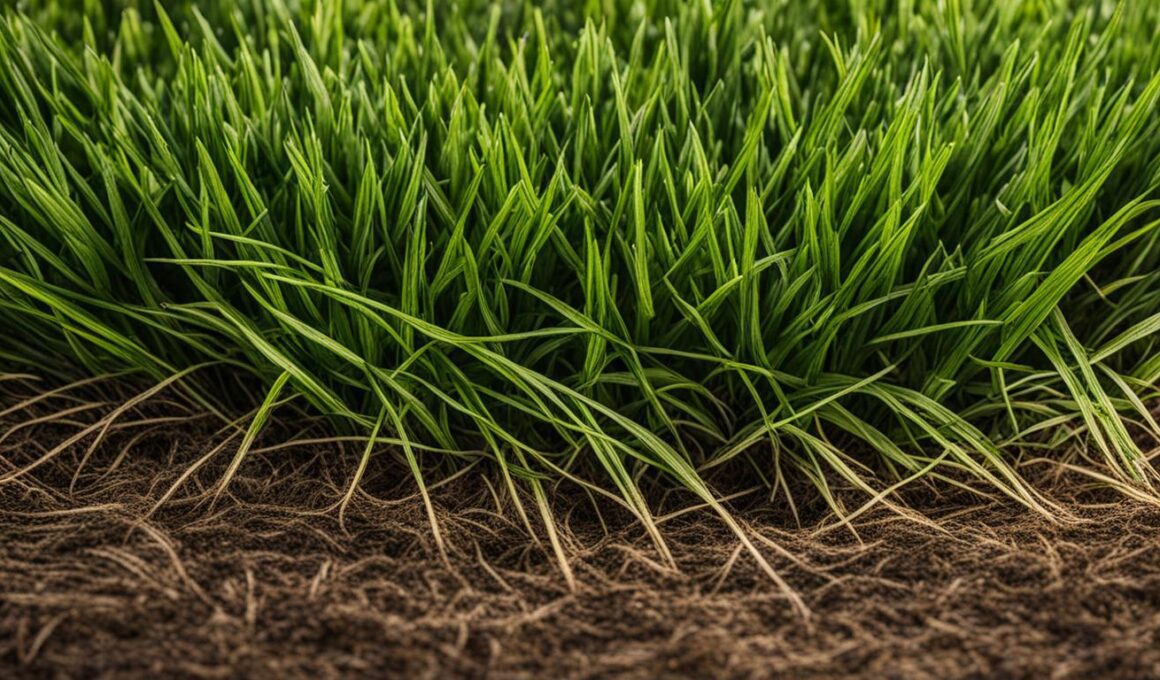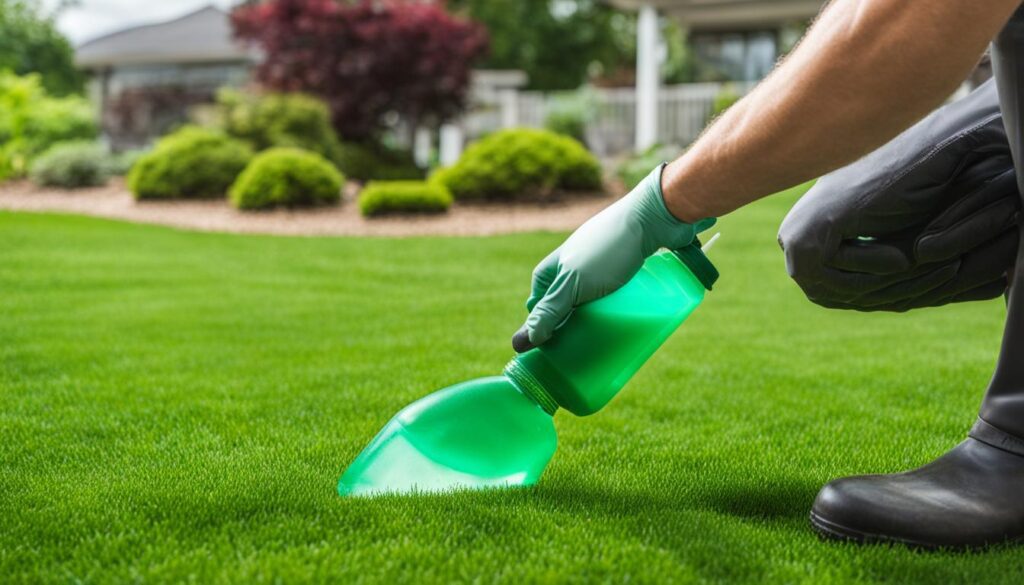Are unsightly brown patches ruining the lush green appearance of your lawn? Don’t worry, you’re not alone. Brown patch lawn disease is a common problem that affects many lawns across the United States. But with the right knowledge and treatment methods, you can combat brown patch and restore the beauty of your lawn.
Brown patch is a lawn disease that thrives in hot and humid weather, making it a persistent issue for homeowners. It causes circular brown patches and lesions on the grass blades, creating an unsightly and unhealthy lawn. If left untreated, the disease can quickly spread, causing significant damage to your turf.
To effectively combat brown patch, it’s important to understand the symptoms and take proactive measures. Look out for brown, brittle patches with a gray-white perimeter and white mycelium on dew-covered grass. If you notice these signs, it’s time to take action.
Prevention is key when it comes to brown patch lawn disease. Implementing preventive measures can help reduce the risk of infection and keep your lawn healthy. Consider aerating and dethatching your lawn to improve airflow and reduce moisture retention. Adjust your lawn care practices to minimize watering and avoid excessive nitrogen fertilizer, as these can promote the growth of the fungus that causes brown patch.
If prevention methods are not enough, you may need to consider chemical treatment. Fungicides containing active ingredients like pyraclostrobin, fluoxastrobin, or azoxystrobin can be effective in controlling the spread of brown patch. Regular applications every 14-28 days can help eliminate the fungus and maintain a healthy green lawn.
So don’t let brown patch ruin the beauty of your lawn. Take action today and combat brown patch with the right treatment and prevention methods. With a little effort and care, you can enjoy a vibrant and disease-free lawn that will be the envy of your neighbors.
Identify and Diagnose Brown Patch Lawn Disease
Brown patch, a common lawn disease, can be easily identified by its distinctive symptoms. If you notice circular patches of brown, brittle grass that spread from blade to blade, your lawn may be affected by brown patch. These patches often have lesions and a gray-white perimeter known as a “smoke ring.” Additionally, you may observe a green center and white mycelium on dew-covered turf. It’s important to note that not all symptoms may be present, but these signs can help diagnose brown patch.
Another characteristic pattern of brown patch is when only parts of the grass blade turn brown, while the center of the circle may recover, creating a donut-like pattern. By recognizing these visual cues, you can effectively identify brown patch in your lawn.
Brown patch primarily affects cool-season grasses, such as tall fescue, perennial ryegrass, Kentucky bluegrass, and bentgrass. These grasses typically show symptoms in late spring. On the other hand, warm-season grasses like St. Augustinegrass, Zoysiagrass, Bermudagrass, and centipedegrass display symptoms in early spring and late fall.
Understanding the specific signs of brown patch and its preferred grass types will enable you to take appropriate measures to diagnose and address this lawn disease effectively.
Preventing and Treating Brown Patch Lawn Disease
To prevent brown patch, it’s important to keep your lawn healthy and implement preventative measures. Research disease-resistant grass types and introduce them into your lawn to reduce the percentage of susceptible grass. Control irrigation by watering in the early morning and avoiding excessive watering when the lawn doesn’t need moisture. Adjust your fertilization practices, avoiding high-nitrogen fertilizer during high growth times and using slow-release forms. Regular mowing at the proper height for your grass species and providing good drainage through proper aeration and dethatching can also help prevent brown patch.
If brown patch does occur, chemical treatment may be necessary. Choose fungicides with active ingredients like azoxystrobin, fluoxastrobin, or pyraclostrobin. Apply the fungicide according to the label directions and make regular applications every 14-28 days for effective control.
Can the Same Treatment for White Fungus on Grass be Used for Brown Patch Lawn Disease?
When it comes to combat white fungus grass and brown patch lawn disease, it’s important to use the right treatment. While some treatments may overlap, it’s best to consult with a professional to determine the most effective solution for each specific issue.
Conclusion
Combatting brown patch lawn disease is crucial to maintaining a healthy and vibrant lawn. By taking early action and implementing preventive measures, you can protect your lawn from the damaging effects of brown patch. Choose grass types that are resistant to the disease, adjust your lawn care practices to reduce susceptibility, and improve drainage to create an unfavorable environment for brown patch.
If brown patch does appear, timely and appropriate chemical treatment can help control its spread. Utilize fungicides with active ingredients such as azoxystrobin, fluoxastrobin, or pyraclostrobin. Follow the label instructions carefully when applying fungicides and make regular applications to effectively manage brown patch.
Regular maintenance practices are also essential in preventing and managing brown patch. Keep your lawn healthy by adhering to proper watering and fertilization practices, mowing at the correct height, and maintaining good drainage. By following these guidelines and consulting with professionals when needed, you can combat brown patch effectively, ensuring your lawn remains green and vibrant throughout the year.











